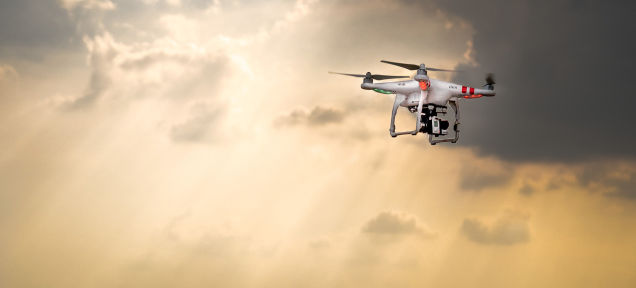NASA is said to be working with Verizon to develop a new means of tracking drones. According to documents acquired by The Guardian, the pair will use radar, satellites and cellular signals to keep track of both civilian and commercial unmanned aerial vehicles.
The newspaper reports that a $US500,000 project investigating the possibilities of such technology is underway at NASA’s Ames Research Center. “NASA is planning the first tests of an air traffic control system for drones there this summer,” writes the newspaper, “with Verizon scheduled to introduce a concept for using cell coverage for data, navigation, surveillance and tracking of drones by 2017.” The paperwork claims that a finished technology could be in use by 2019. The newspaper explains how it could work:
NASA is considering monitoring drones with a range of sensors including radar, orbiting satellites and mobile phone signals. The UTM system is also likely to be cloud-based, meaning that drones will need an internet link to download information about weather, traffic and restricted zones. That combination makes using the existing phone networks very attractive. “Mobile phone technology will help to communicate information about other aircraft and we can already track phones like crazy,” says Missy Cummings. “It’s a nice alternative to saturating an already broken air traffic control system.”
The new approach would apparently help enable safe low-altitude drone operations, creating “geo-fences” that stop the vehicles encroaching on predefined, sensitive areas — say, the government or military facilities. The system could also be used to ground drones when the weather gets bad, or route them more effectively so that don’t collide with each other — or buildings — when the airspace gets busy.
The documents — obtained under the Freedom of Information Act — also suggest that both Google and Amazon have signed up to help with the testing at NASA’s research center. Google has apparently invested $US450,000 to test its driver-less cars at Ames, as well as working with the space agency on its Project Wing drone program. Elsewhere, Amazon has reportedly ponied up $US1.8 million to puts its Prime Air drones through their paces.
Building a drone air traffic control system from scratch has long been considered a major headache. Piggbybacking on existing infrastructure — with support of some of the biggest technology companies in the world — could make it a whole lot easier. Let’s wait see. [Guardian]
Picture: Motographer/Flickr
